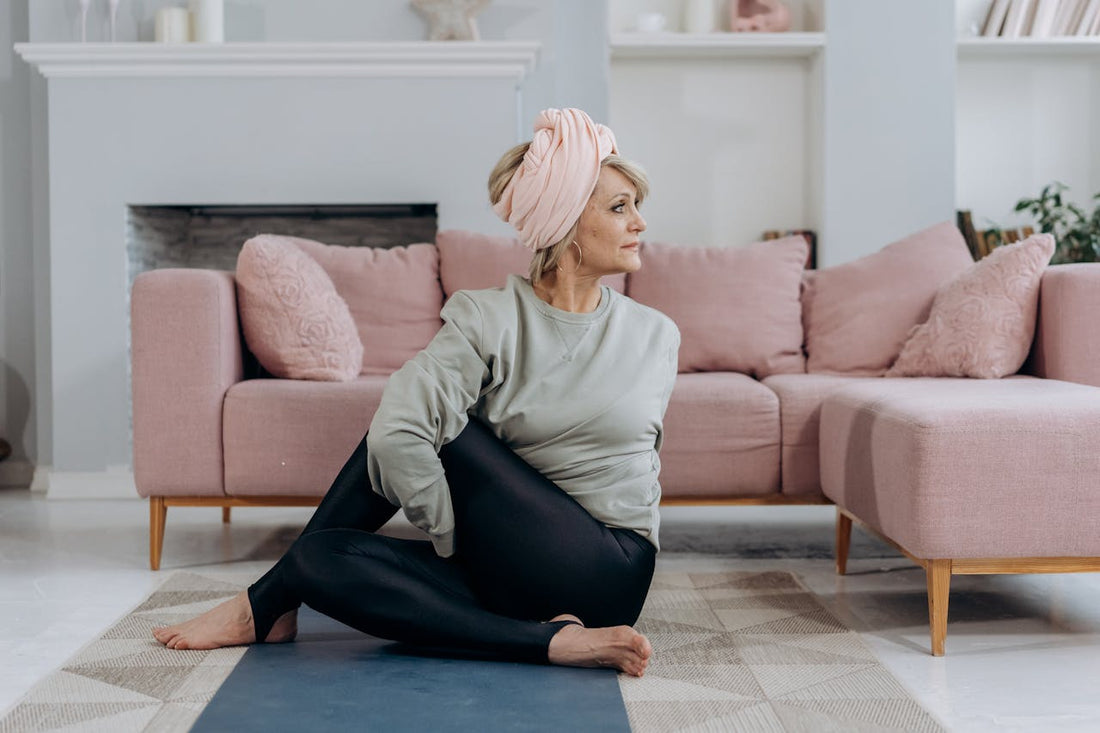
Strength Training at Home: How to Build Muscle Without a Gym Membership
You don’t need a gym membership to get strong, especially if you’re over 50 and just starting your fitness journey. Strength training at home can be just as effective as working out in a gym and offers the convenience of fitting exercise into your daily routine. Whether you have access to minimal equipment or just want to use your body weight, there are plenty of ways to build muscle safely and effectively at home. Here’s how to get started.
The Benefits of Strength Training at Home
Working out at home offers several advantages, especially for those over 50:
- Convenience: You can exercise at any time without worrying about travel, gym hours, or crowds.
- Cost-Effective: There’s no need for expensive memberships or fancy equipment. Simple items like resistance bands, dumbbells, or even household objects can do the job.
- Comfortable Environment: Exercising in your own space allows you to go at your own pace without feeling self-conscious.
- Customizable: You can adapt exercises to your specific needs, fitness level, and any physical limitations you may have.
Essential Equipment for At-Home Strength Training
While you don’t need much equipment to get started, a few basic items can enhance your workout:
- Resistance Bands: Lightweight, portable, and versatile, resistance bands are great for a full-body workout.
- Dumbbells: If you have space, a set of dumbbells in various weights can help you gradually build strength.
- Bodyweight Exercises: No equipment? No problem. Bodyweight exercises like squats, push-ups, and lunges are highly effective for building strength.
Sample At-Home Strength Training Routine
Here’s a simple full-body routine you can do at home, using just your body weight and minimal equipment. Aim to do this workout 2–3 times per week:
1. Bodyweight Squats (3 sets of 10–15 reps)- Stand with feet shoulder-width apart, lower yourself as if sitting in a chair, and return to standing. Squats target your legs, glutes, and core.
- Start in a plank position with your hands under your shoulders. Lower your body toward the floor, then push back up. If full push-ups are challenging, try modified push-ups on your knees or against a wall.
- Attach a resistance band to a sturdy object at chest height. Stand facing the band, grab it with both hands, and pull toward your body, squeezing your shoulder blades together. This exercise strengthens your upper back and shoulders.
- Lie on your back with your knees bent and feet flat on the floor. Lift your hips toward the ceiling, squeezing your glutes at the top, then lower back down. Glute bridges strengthen your lower back and glutes.
- Start in a push-up position with your forearms on the ground and your body in a straight line. Hold this position while engaging your core. Planks build core strength and stability.
Tips for Success
- Start Slow: If you’re new to strength training, begin with light resistance or just your body weight. Focus on mastering proper form before increasing intensity.
- Progress Gradually: As you get stronger, increase the number of reps, sets, or resistance used. This ensures continued progress while avoiding injury.
- Stay Consistent: Consistency is key for building strength. Aim for at least two strength training sessions per week, gradually increasing the intensity as your fitness improves.
- Listen to Your Body: Always be mindful of how your body feels. If you experience pain, stop and reassess your form or take a rest day.
References and Resources
1. Books:- "Strength Training Over 50" by Dr. Karl Knopf: This book provides practical exercises and routines specifically for older adults looking to build strength at home.
- "The Bodyweight Home Workout Bible" by Anthony Arvanitakis: A comprehensive guide to strength training using just your body weight.
- NHS Fitness Studio Exercise Videos: Offers a variety of home workout videos, including strength training routines for beginners (https://www.nhs.uk/conditions/nhs-fitness-studio/).
- Bodybuilding.com Home Workouts: Provides detailed strength training exercises and plans tailored to different fitness levels (https://www.bodybuilding.com).
- "Home-based exercise: Is it a viable option for older adults?" - This study, published in The Journal of Aging and Physical Activity, highlights the effectiveness of home-based exercise for maintaining muscle mass and physical function in seniors.
- "Benefits of resistance training in older adults" – Research published in Sports Medicine discusses the importance of strength training for aging populations, particularly in maintaining independence and reducing fall risk.
Conclusion
Strength training at home is not only convenient but also a highly effective way to build muscle, improve bone density, and maintain overall health after 50. With a few simple pieces of equipment and a dedicated routine, you can safely and comfortably begin your fitness journey in the comfort of your own space. The key is to start slow, progress steadily, and stay consistent.
